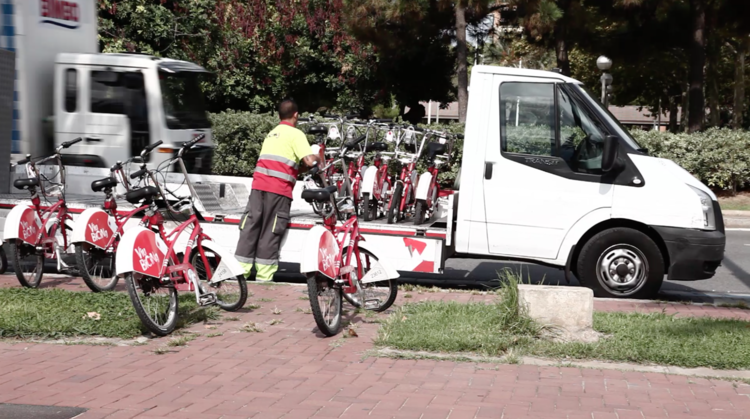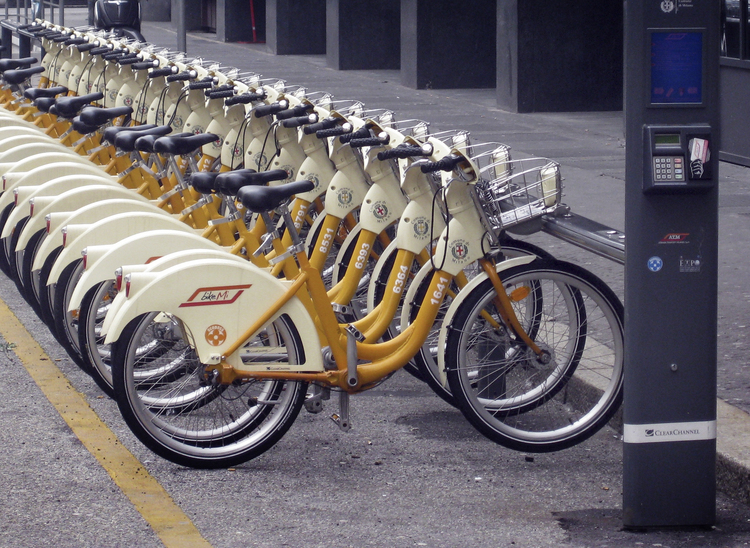
Smarter Cycling Series: Data from bike-share, for bike-share
As part of our work to help cycling and the bike industry into the world of smart, connected and shared mobility we are working with visionaries and leaders who are setting the tone in this new mobility. We are going to be inviting some of them to share their thoughts and visions with ECF.com in the coming months.
 Moritz Meenen is CEO and Founder at ElectricFeel, a company that provides a revolutionary planning and management solution for on-demand mobility thanks to predictive software that help mobility operators elevate customer satisfaction and mobility revenues. His expertise in big data analysis when it comes to bike sharing systems is unrivalled.
Moritz Meenen is CEO and Founder at ElectricFeel, a company that provides a revolutionary planning and management solution for on-demand mobility thanks to predictive software that help mobility operators elevate customer satisfaction and mobility revenues. His expertise in big data analysis when it comes to bike sharing systems is unrivalled.
Innovation: Simpler access and electric bikes
It is exciting to see how rapidly and confidently bike-sharing systems are conquering our world’s cities. Today, there are roughly 1000 bike-sharing systems with a world fleet of 1 million bicycles installed, bringing people low-cost, fast and healthy transportation.

Hand in hand with this growth comes its technological evolution: in the city of Shanghai, we hear of the introduction of the first large scale free-floating bike-sharing service, founded by an ex-executive of the car ride-sharing company Uber: entirely station-less, the service lets users locate and unlock one of now 10.000 bikes through the mobile app and lock it up anywhere within the business area. Next to increasingly simple and mobile ways of accessing the bikes, another innovation is bound to support the massive bike-sharing rush: the introduction of the e-bike. E-bikes, the blessing for the cycling industry, are extremely well-placed in a bike-sharing system for two reasons:
- One, people who cannot afford to purchase an e-bike. With e-bike-share, they can now use it, only paying for the time they spend riding.
- Two, people who don’t want to own an e-bike because they expect it to be a hassle or simply don’t believe they will use it every day. With e-bike-share, they can now just try them out, zipping through the city, fast and sweat-free.
E-bike-sharing is a reality, for example in the fully electric fleet of BiciMAD in Madrid, and the combined fleet of bikes and e-bikes in the BikeMi-system in Milan. I am certain that we will see a tremendous growth in e-bike-sharing within the next five years.
Transit rules: Availability = Reliability
However, in order for bike-sharing to grow up to real a public transportation system, integrated with bus and urban rail as an alternative or complementary, ”last-mile” pillar of the network, there is one challenge that simple access and e-bikes can’t solve: the reliability of the service.
What does reliability mean in the context of bike-sharing? Let's compare: whenever I commute by public transit, I plan my trip using the apps google maps or Moovit, and can expect the train or bus to arrive at a certain time with a few minutes of delay at most. If I ever miss a bus, I open the app again just to see another one will be coming in 9 minutes - that’s how public transit works and millions of people are relying on it every day. In bike-sharing, there is no schedule. This is not a problem in itself, as long as I always find a bike when I need it, and a place to park it when I arrive at my destination. Unfortunately, this is not the case and every frequent bike-sharing rider we have spoken with confirms it: you cannot rely on it for your every day commute. Depending on the circumstances, people get frustrated, at times even angry, complaining through the system providers’ social media channels, customer hotlines, or even deciding to quit their membership.
Now bike-sharing can go two ways:
- Clearly label bike-sharing it as a service for occasional users and don’t create expectations around reliability,
- Make the dream come true: fix the availability problem and scale it up until demand saturates (no bike-sharing service is at that point yet)
The hard path to solving big challenges
On the operators’ side, i.e. the companies managing the bike-sharing services, delivering a reliable service means making sure there are enough bikes and enough docks at all times. Currently, this is done using what are known as rebalancing trucks, which collect bikes from fuller stations and distribute them to the empty or close-to-empty ones. Unfortunately, operators cannot predict where people need bikes and so this task becomes very inefficient: bike rebalancing accounts for an average of 30% of the operational costs, according to “Optimising Bike Sharing in European Cities” . The yearly operating cost of Velib, the largest bike-share scheme in Europe, amounts to €60-90 million, according to the Bike Share Planning Guide, while in Barcelona, Bicing consumes approximately €20 million in operational expenses. On a per bike basis, the operating cost amounts to €2,000 - 4,000 annually and generally it is much higher for larger systems, due to the exponentially increasing complexity of the system dynamics.
The intuitive approach – buying more bikes and stations and trucks - proves inadequate in solving the problem due to decreasing efficiency with scale: no customer would be willing to pay more and more for a growing service network. Others try alternative ways, such as a valet service, whereby staff accept incoming bikes directly from users and ride them to other stations, as done by New York’s Citibike, but this is far from economically feasible. Another approach is station overflow, where users can lock bikes outside of the docks, like in DB Call-A-Bike, or dropping them off at non-station locations for an additional fee, like in Portland’s Biketown. Unfortunately, all these methods only partially solve the problem: people are still left without bikes, and operators incur immense costs, making the whole business weak and vulnerably dependent of external sources of income.
With data comes help
As it happens in other industries, it’s the power of data that must be used to understand complex systems and create higher efficiencies and better output for all. By analysing the available data and using statistics and predictive algorithms, bike-sharing can gear up on all levels of decision-making, i.e. operational, tactical and strategic. What operators need are data-driven tools that steer all operations towards better availability for the dynamic user, with the simple goal of making bikes available where and when their users need them.
How this is possible can be explained in three steps:
- Analysing user patterns
- Predicting user demand in real-time
- Recommending optimal strategies for rebalancing
Smart tools to grow bike-sharing usage
Constantly learning about the network’s changing user demand, calculating real-time predictions at any moment, (e.g. 5:48pm, 25°, light rain, no soccer game and traffic jams in the main streets) will soon be a standard process of every bike-sharing system. Based on this, operators will have tools on top of these predictions to make better rebalancing decisions (operational), shift planning (tactical) and even station network location, expansion of rebalancing truck fleet and hiring of additional service staff (strategic).
At ElectricFeel, we are on a mission to make bike-sharing achieve growth towards becoming an established means of public transit: this fall, we are reaching out to European bike-sharing operators to show them how data tools can help get their systems to the next level.
Regions:
News category:
Network/Project Involved:
Contact the author
Recent news!
Upcoming events
Contact Us
Avenue des Arts, 7-8
Postal address: Rue de la Charité, 22
1210 Brussels, Belgium










